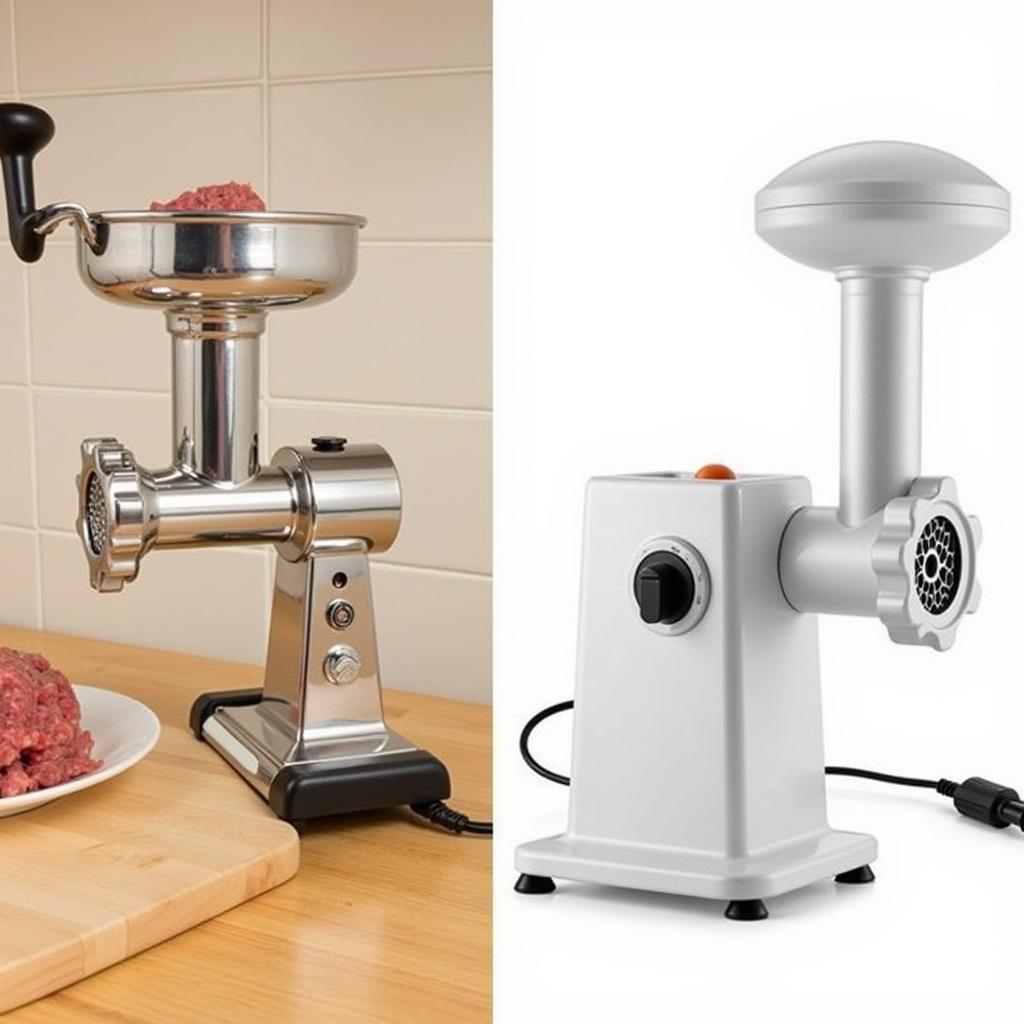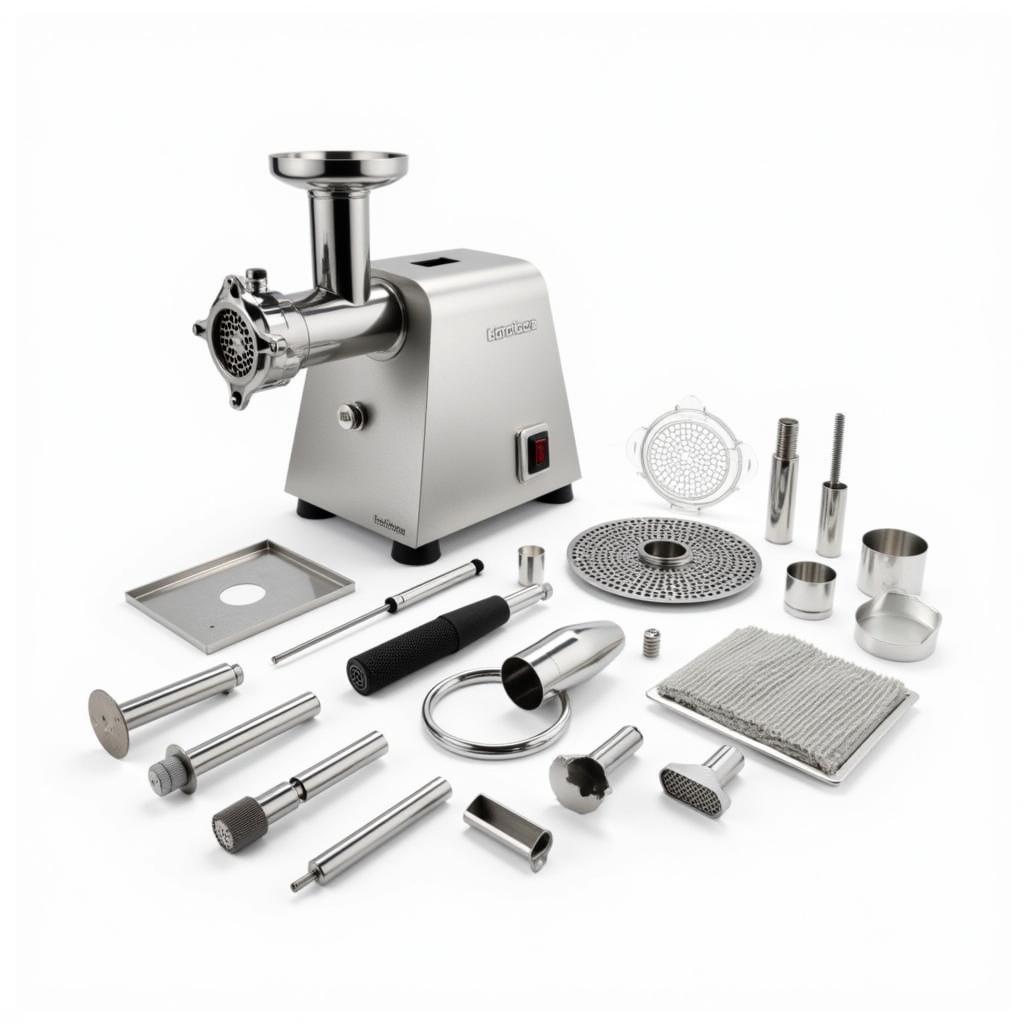Feeding your furry friend a raw diet can be a rewarding experience, but preparing it can be time-consuming. A meat and bone grinder simplifies the process, allowing you to create nutritious, balanced meals quickly. This guide will delve into everything you need to know about choosing the best Meat And Bone Grinder For Raw Dog Food, helping you make an informed decision for your canine companion’s health.
Why Grind Your Own Raw Dog Food?
Grinding your own raw dog food offers significant advantages. You control the ingredients, ensuring the highest quality and freshness. This is especially crucial for dogs with allergies or sensitivities, as you can tailor the diet to their specific needs. Grinding also allows you to adjust the consistency of the food, catering to puppies, senior dogs, or those with dental issues. Finally, preparing raw food at home can be more economical in the long run compared to purchasing pre-made options.
Key Features to Consider in a Meat and Bone Grinder
Selecting the right grinder involves considering several factors. Power is essential, as a powerful motor can handle bones and tougher cuts of meat with ease. Durability is also key; look for grinders made from high-quality materials like stainless steel. Ease of cleaning is crucial for hygiene, and a grinder with detachable parts simplifies this process. Size and capacity matter depending on how much food you prepare at a time, and consider the noise level, as some grinders can be quite loud. Different grinder types exist, including manual and electric models, each with its own pros and cons.
 Different Meat Grinder Types for Raw Dog Food
Different Meat Grinder Types for Raw Dog Food
Electric vs. Manual Grinders: Which is Right for You?
Choosing between an electric and manual meat and bone grinder depends on your needs and preferences. Manual grinders are generally more affordable and don’t require electricity. However, they require more physical effort and are less efficient for large batches. Electric grinders are faster and more powerful, making them ideal for processing larger quantities of meat and bones. They also offer greater convenience, particularly when dealing with tougher ingredients.
How to Use a Meat and Bone Grinder for Raw Dog Food
Using a meat and bone grinder is relatively straightforward. First, ensure all parts are clean. Cut the meat and bones into smaller pieces that will fit into the grinder’s feeding tube. If using an electric grinder, assemble it according to the manufacturer’s instructions. For manual grinders, secure the grinder to a stable surface. Begin grinding, using the appropriate grinding plate for the desired consistency. After grinding, thoroughly clean all parts to prevent bacterial growth.
Maintaining Your Meat and Bone Grinder
Proper maintenance is essential for the longevity and performance of your grinder. After each use, disassemble and clean all parts thoroughly with warm, soapy water. Ensure all parts are completely dry before reassembling and storing. Regularly check for any signs of wear and tear, such as dull blades or damaged parts. Replace parts as needed to ensure optimal performance.
What Size Grinder Do I Need?
The size of the grinder you need depends on the amount of raw dog food you plan to prepare. For small dogs or infrequent grinding, a smaller grinder will suffice. If you have multiple large dogs or plan to grind frequently, a larger capacity grinder is recommended.
“Investing in a quality meat and bone grinder is a worthwhile investment for any raw feeder. It empowers you to provide your dog with the freshest, most nutritious meals possible.” – Dr. Amelia Shepherd, DVM
Conclusion: Finding the Perfect Grind for Your Canine Companion
Choosing the best meat and bone grinder for raw dog food is a crucial step in providing your dog with a healthy and balanced diet. By considering factors like power, durability, ease of cleaning, and size, you can find the perfect grinder to meet your needs and ensure your furry friend thrives on their raw food journey. Remember, preparing raw food at home offers you control over ingredients, ultimately benefiting your dog’s health and well-being.
 Cleaned and Maintained Meat Grinder
Cleaned and Maintained Meat Grinder
FAQs
-
Can I grind bones in any meat grinder? No, not all meat grinders are designed to handle bones. Look for grinders specifically marketed for grinding bones.
-
How often should I clean my meat grinder? Clean your meat grinder thoroughly after each use to prevent bacterial growth.
-
What type of meat is best for raw dog food? A variety of meats, including muscle meat, organ meat, and bones, are important for a balanced raw diet.
-
Are manual grinders suitable for grinding bones? Some heavy-duty manual grinders can handle bones, but electric grinders are generally more efficient for this task.
-
What is the benefit of grinding raw dog food myself? Grinding your own raw dog food allows you to control the ingredients and customize the diet for your dog’s specific needs.
-
How do I know if my grinder is powerful enough? Look for grinders with higher wattage motors for grinding bones and tougher meats.
-
Where can I buy a meat and bone grinder? Meat and bone grinders can be purchased online, at kitchen supply stores, and at some pet supply stores.
Need assistance? Contact us 24/7: Phone: 02437655121, Email: minacones@gmail.com or visit us at 3PGH+8R9, ĐT70A, thôn Trung, Bắc Từ Liêm, Hà Nội, Việt Nam.